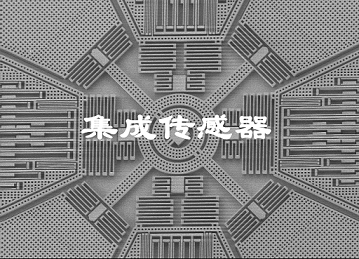
当前课程知识点:Chinese Folk Motif Arts > Unit 4. The Heritage of Chu Culture: Discovering the Intangible Cultural Heritage > 4.5 Art Practice: Decorative painting > Art Practice: Decorative painting modeling
返回《Chinese Folk Motif Arts》慕课在线视频课程列表
返回《Chinese Folk Motif Arts》慕课在线视频列表
现在 我们开始讲造型篇
我调出前面画的线描图
我给线描图做一个透明度的颜色
以便在上面勾画一些造型
我把前面提炼的配色
放到PS软件里来
把参考图
也调出来
把线描稿设置一个比较合适的透明度
大约34%左右
我觉得差不多了
在线描稿的上面
我会用图形工具来做造型处理
把线描稿整理好
让它更接近我预想的方案
结合图形工具
钢笔工具
用钢笔工具
在线描稿上绘制固定的造形
用钢笔工具给图形勾线
在原来线描稿的基础上勾画出图形的线条
设定描点
这样
也便于后期的修改
这些线条是矢量的
对于矢量的图形可以放大和缩小
用钢笔工具去绘制图形的造型
我们从底层先做起
先把它的底层造型和大的轮廓绘制之后
再往上一层层地叠加
再去做它上面的造型
比如说 我先从脸的底部做起
再刻画五官的造型
然后在上面做一些装饰纹
我会选用合适的色块
注意左上角的操作 我去掉描边
以填充颜色的方式去制作图形
所选取的颜色
按照我之前
配置的颜色来参考
为了看清楚画面
我会把图形作透明度的处理
控制一些描点的手柄
这些描点
要尊重我前面的线描稿
其他的也这样做
与前面的线描稿保持基本一致
画面上对称的部分制作一半就可以了
另一半可复制过去
现在显示速度基本上是原速
但后面会做一些加速处理
因为工作量非常大
如果
如果是按原速播放
需要好几个小时
这是勾选
五官的基本造型
眼睛的基本造型
这都是在线描稿基础上去描绘
这部分工作用到的工具
基本上是钢笔图形工具
我现在调用了预览功能
因为我这边要勾画一些细节
我看不到整体效果
在预览窗口可以看到整体的同步
通过小的预览图
方便控制画面的整体效果
工具是从窗口里调出来的
鼠标操作一下PS就可以找到
关于设计软件的应用
也可以用Illustrator软件
或者其他的图形软件
只是我用PS软件比较熟练
我平时用得较多 所以就用它来制作
其实制作装饰画可以不限软件工具
主要看你想表达什么对象
制作造型依赖的是原有的线描图
在线描图的基础上做一些加工
再结合初始的概念
把这些创意具象化
让它一步步趋于完成
这些装饰纹来自参考的素材
是从素材里提炼出来的
来自湘西少数民族的挑花
这些细节的制作都是重复性工作
需要反反复复地修改
让它呈现出我最想要的样子
这是
她头饰上的那些装饰纹
头饰是比较复杂的
制作它的时间
也需要长一些
现在是她身上的图案 月亮
我用图形工具去剪切
我们看一下
在制作这一部分的时候
我在调整右边的窗口
我设定了很多图层
每一图层的文件
我都会给它归类
这样便于后期的修改和调整
是吧
我现在绘制身体的造型
我会把身体
分为头部和四肢来绘制
我把这些归类到傩母的文件夹里去
把右边的傩公归类到另外的文件夹里
傩母身体的部分造型
已经绘制完了
我们现在绘制她的腿部
与前面的方法一样
我先绘制一半
根据下层的底图去描绘她的造型
描绘完之后我就复制过去
这一部分工作比较细致
需要一定的耐心
现在是傩公装饰图案的制作
我们看一下右上角这张图中的装饰纹
可以在原基础上做一些加工
让它
有一些趣味性
不要死板地套用
不要完全套用前面的线描稿
那些线描稿是一个基本的参考
我们可以在它的基础上
进一步完善和修改
四肢的这一部分
我也只绘制一半
复制过去就OK了
看我现在右边的图层越来越有规律
越来越清楚
越来越细致
现在绘制傩母下肢部分的图形
制作图形
在一般情况下
用到的主要技法有
钢笔工具 套索工具
还有复制 粘贴 旋转等
这些最基本的操作
熟练之后 你就可以自由运用它们了
这个装饰纹的制作
我先绘制三处
绘制了之后
调整它的描点 就OK了
我给拐杖的手柄部分作一些微调
让它有一定的弧度
上面这些小的图案
你可以自由处理
可以一边制作一边调整
傩母的造型已经就勾画得差不多了
现在我们开始制作傩公的造型
我们还是从头部开始制作
先确定他头部大的框架
调整好他的比例关系之后
再塑造它的五官造型
嘴巴 我们先制作成一个圆形
然后用方形去切割它
再调整它的
一些细节
依此类推
鼻子也用这种方法绘制
他的眼睛
有一些特殊的螺纹线条
慢慢去勾画它
这些对称的图形都只需要绘制一半
然后可拷贝复制成另一半
原来的线描稿没有细致的造型
缺少一些细部
对一些不清楚的部位
需要进一步细化
把它原来不明确的形态画清楚
把它原来不清楚的边缘
勾画清楚
这称为 抠细节
这种做法
我认为是细化
傩公胸前太阳纹的制作
也应该先画整体
然后再画上面的一些装饰
不要先画细节
不要先画一些很小的花纹
或者先把人像的眼睛画得很细致
然后再去画他的脸和手
这种方法是不正确的
效率很低
而且容易出错
我们还是先把大的框架定好之后
等到比例关系都没有问题了
再去处理细部
一步一步地进行
时刻观察画面的整体效果
绘画和设计的处理都应该按照这样的步骤
这样做的原则是
先注重整体
再处理局部
这个太阳纹的制作
我给它铺设一些花纹
作为太阳纹的装饰
处理好它的细部
把它的装饰纹制作完之后
开始制作他的下肢部分
与前面其他部分一样
先画出下肢的一半
下肢的另一半可以复制
这些是
服装上面的一些特殊纹饰
这些纹饰
都是一层层叠加上去的
看我右边的些图层
对于每一个图形的制作
我都是先生成一个新的图层
回过头来再调整
这样比较方便
为什么用黑白稿
用黑白稿的原因
就是说
我可以先不考虑它的色彩
先避开配色
等我把造型完成之后再去配色
我把设计的步骤拆解开
这样能让我的设计
能让我的设计进程
循序渐进 更具有科学性
如果
如果我一开始就上色
这样处理
需要同时考虑造型和配色两方面
我就
处理不过来
这样会使设计的节奏紊乱
如果一步步地制作
一点一点去完善它
这样的效率最高
现在是拐杖的设计
我们造型篇的大部分工作
都是以工具为基础展开应用
它是在原来线描稿的基础上
再做一些二次加工
线描稿在设计中非常重要
因为后面的造型改动不大
所以这一步要尽量保持最初的创意
尊重黑白线描稿的效果
好 造型篇的演示就到这里
-A brief introduction of the study unit
-1.1 The meaning of learning Chinese folk motifs
--1.1 The meaning of learning Chinese folk motifs
-1.2 A brief introduction of graph
--1.2 A brief introduction of graph
-1.3 The basic categories of Chinese folk motifs
--1.3 The basic categories of Chinese folk motifs
-1.4 The basic characteristics of Chinese folk motifs art
--1.4 The basic characteristics of Chinese folk motifs art
-1.5 Research on the questions and the motifs cases
--(1) Researches and case studies on motifs
--(2)Research on Traditional Motifs
-1.6 Unit assignment: thinking questions
-1.7 Online Quiz
--1.7 Online Quiz
-1.8 Expanded learning resources
--Embroidery of Guizhou Miao ethnic group (Video)
--The Magnificent Miao Ethnic Group: Wordless Book of Miao (Video)
--Chinese Folk Motifs(Graphics and images)
--Websites
-A brief introduction of the study unit
-2.1 The modeling methods of folk motifs
--2.1 The modeling methods of folk motifs (Part 1)
--2.1 The modeling methods of folk motifs (Part 2)
-2.2 Aesthetic implication of folk motifs
--2.1 Aesthetic implication of folk motifs (Part 1)
--2.2 Aesthetic implication of folk motifs (Part 2)
-2.3 Research on the questions and the motifs cases
--Research on the questions
-2.4 Art Practice: Canton Embroidery
-2.5 Unit assignment: Judgment and thinking questions
--Judgment questions
-2.6 Expanded learning resources
--My hereditary treasure: new year woodblock print made by Tai Liping (Video)
--Taohuawu new year woodblock print (Graphics)
-A brief introduction of the study unit
-3.1 A Brief Introduction of Chinese Folk Paper Cut
--3.1 A Brief Introduction of Chinese Folk Paper Cut
-3.2 The craft of Chinese folk paper cut
--3.2 The craft of Chinese folk paper cut
-3.3 The techniques of expression of Chinese folk paper cut
--3.3 The techniques of expression of Chinese folk paper cut
-3.4 A brief introduction of Chinese shadow puppetry
--3.4 A brief introduction of Chinese shadow puppetry
-3.5 The artistic characteristics of Chinese shadow puppetry
--3.5 The artistic characteristics of Chinese shadow puppetry
-3.6 The modeling of Chinese shadow puppetry
--3.6 The modeling of Chinese shadow puppetry
-3.7 Art Practice: Paper Cut
--A Brief Introduction of Art Practice
--Traditional Chinese Paper Cutting : Butterfly
--Traditional Chinese Paper Cutting : Baby with twisted knors of har
--Paper-cut creative case (picture)
-3.8 Unit assignment: Paper Cut creation
-3.9 Online Quiz
--3.9 Online Quiz
-3.10 Expanded learning resources
--Backstage performance of shadow play (video) (Ⅰ)
--Backstage performance of shadow play (video) (Ⅱ)
--Shadow play "Monkey Eating Peach"
--Analysis of Chinese Shadow Puppet Art
-A brief introduction of the study unit
-4.1 The State of Chu and Chu Culture
--4.1 The State of Chu and Chu Culture
-4.2 Representative Graphics of Chu Culture Remains
--4.2 Representative Graphics of Chu Culture Remains
-4.3 Intangible Cultural Heritage of Chu Culture
--4.3 Intangible Cultural Heritage of Chu Culture (Part 1)
--4.3 Intangible Cultural Heritage of Chu Culture (Part 2)
-4.4 Research on the questions and the motifs cases
--Chu Culture Relics Graphics
--The motifs case : Tujia ethnic Brocade "Xilan Kapu"
-4.5 Art Practice: Decorative painting
--Art Practice: Decorative painting sketch
--Art Practice: Decorative painting modeling
--Art Practice: Decorative painting coloring
-4.6 Unit assignment
--4.6 Unit assignment
-4.7 Online Quiz
--4.7 Online Quiz
-4.8 Expanded learning resources
--Bronze ware, lacquerware, silk fabrics of Chu culture
--Yao ethnic bright-colored embroidery applique, Dong ethnic brocade
-A brief introduction of the study unit
-5.1 Totem
-5.2 Panhu Worship
-5.3 The Legends of Totem in Costumes
--5.3 The Legends of Totem in Costumes
-5.4 The Tattoos of the Li Ethnic Group
--5.4 The Tattoos of the Li Ethnic Group
-5.5 Art Practice: Tie-dye
--Xiang Yunfang tie-dyeing (clamp-tie) video
--Xiang Yunfang tie-dyeing (bundle-tie) video
--Xiang Yunfang tie-dyeing (dog-paw flower) video
-5.6 Research on the questions and the motifs cases
--Totem problem exploration
--Traditional graphics cases:The "Hundred-bird Clothes" of the Miao ethnic in Guizhou
-5.7 Unit assignment: Tie-dye creation and thinking questions
--5.7 Unit assignment: Tie-dye creation and thinking questions
-5. 8 Expanded learning resources
--Miao embroidery in Taijiang (Video)
--The Magnificent Miao Ethnic: Who made life so glorious (Video)
--National costumes of southern China
-A brief introduction of the study unit
-6.1 Philosophical Reflections on the Harmony of Taiji and “Yin and Yang”
--6.1 Philosophical Reflections on the Harmony of Taiji and “Yin and Yang”
-6.2 “Nine Palaces” and Its Spatial Layout
--6.2 “Nine Palaces” and Its Spatial Layout
-6.3 Plane Static Four-dimensional Space
--6.3 Plane Static Four-dimensional Space
-6.4 “Almorphism” of Batik Graphics
--6.4 “Almorphism” of Batik Graphics
-6.5 Ingenious Calculations by Folk Carpenters
--6.5 Ingenious Calculations by Folk Carpenters
-6.6 Research on the questions and the motifs cases
--Research on the questions and the motifs cases
--Introduction to Miao Batik (Video)
--Danzhai Batik - Painting Wax (Video)
-6.7 Unit assignment: thinking questions
--6.7 Unit assignment: thinking questions
-6.8 Online Quiz
--6.8 Online Quiz
-6.9 Expanded learning resources
--The image of dragon in Chinese folk motifs (graphic and image)


